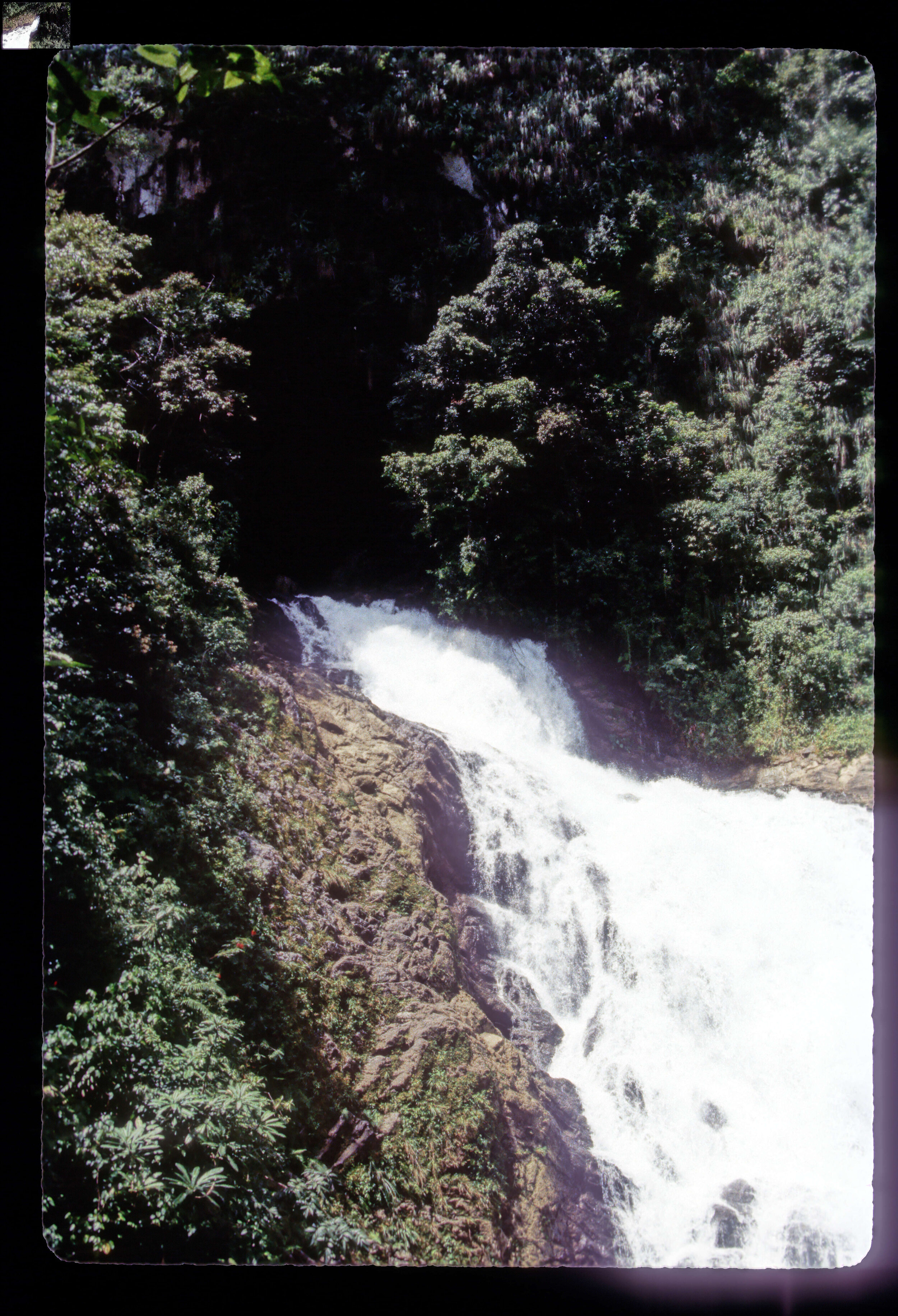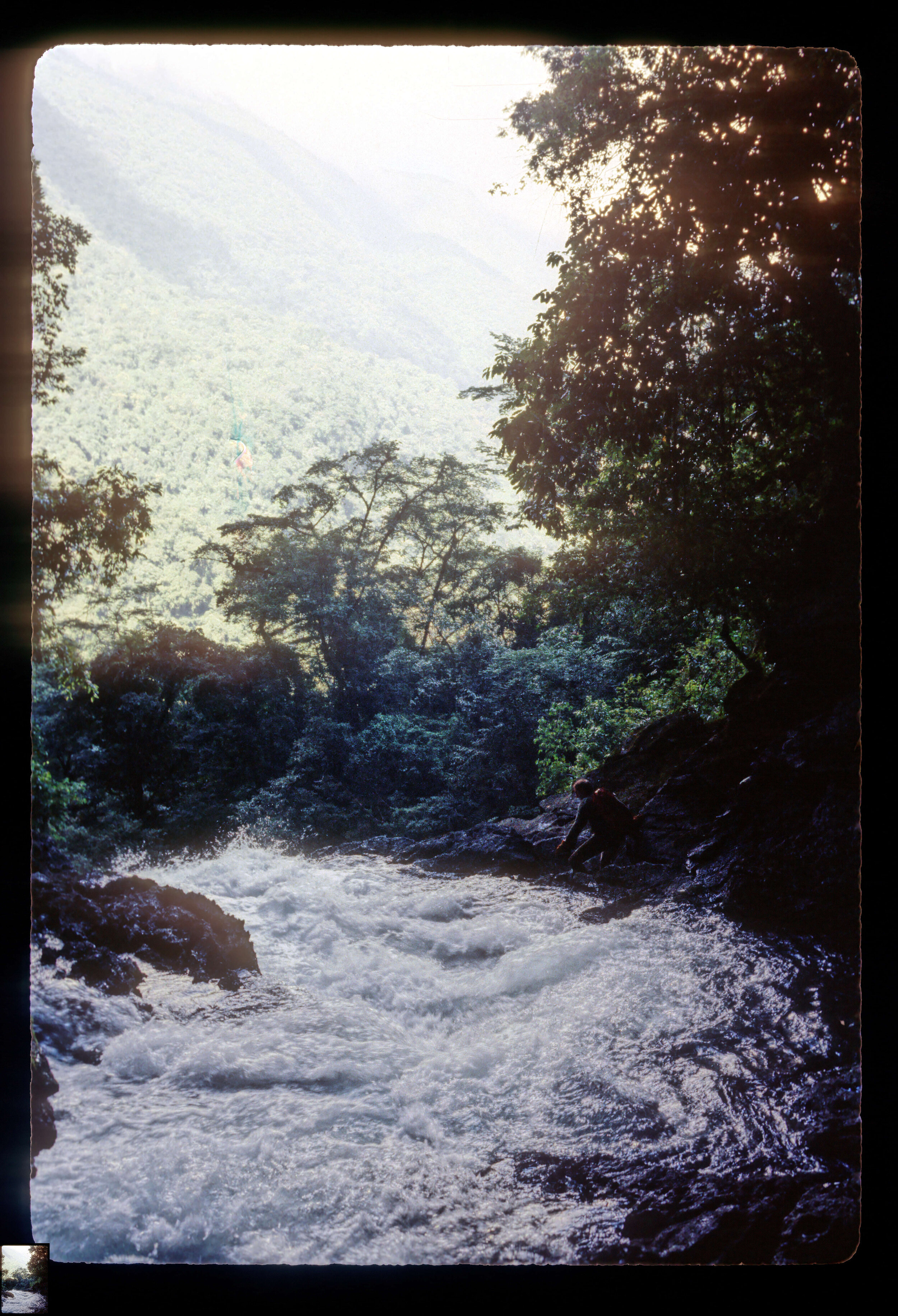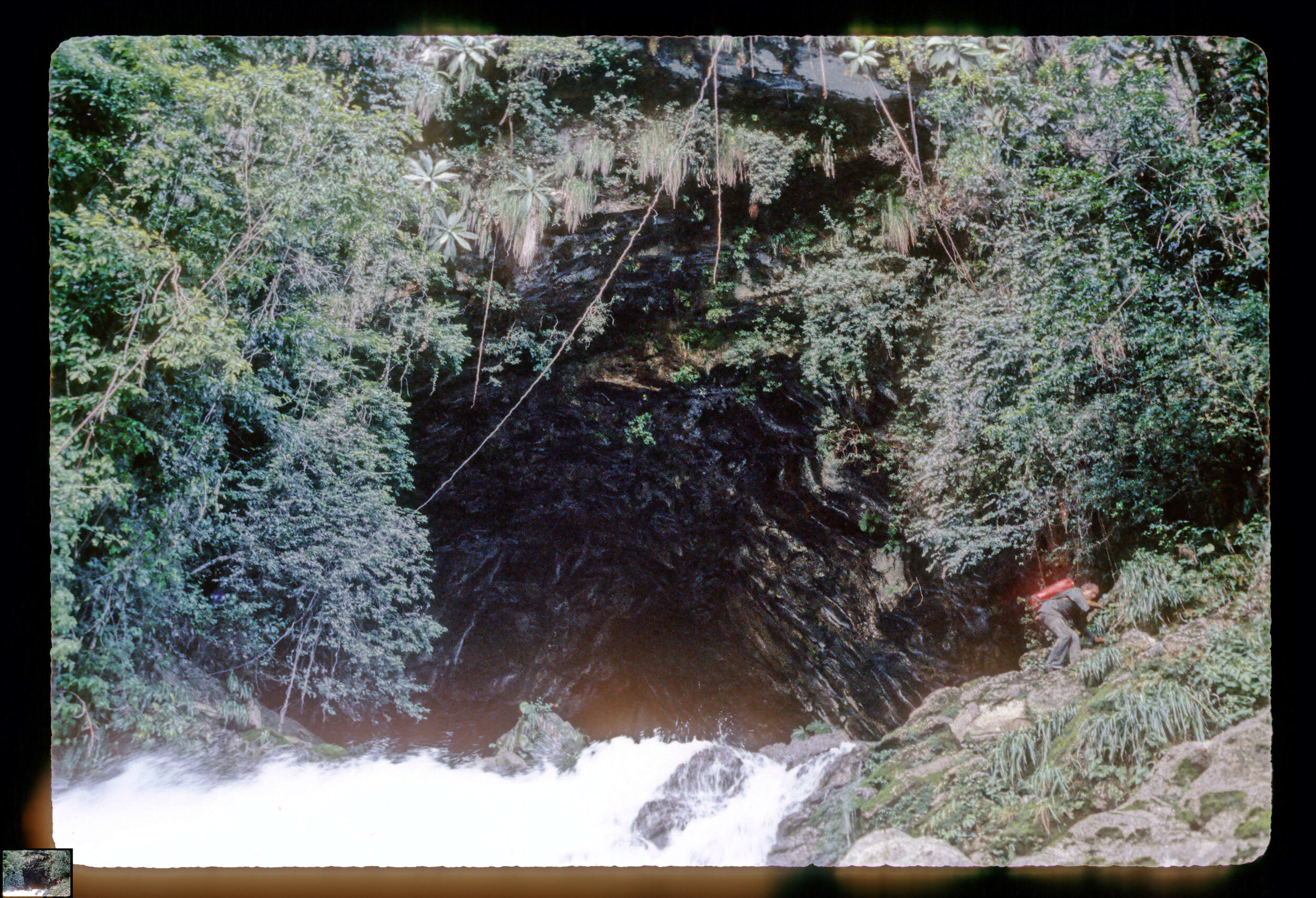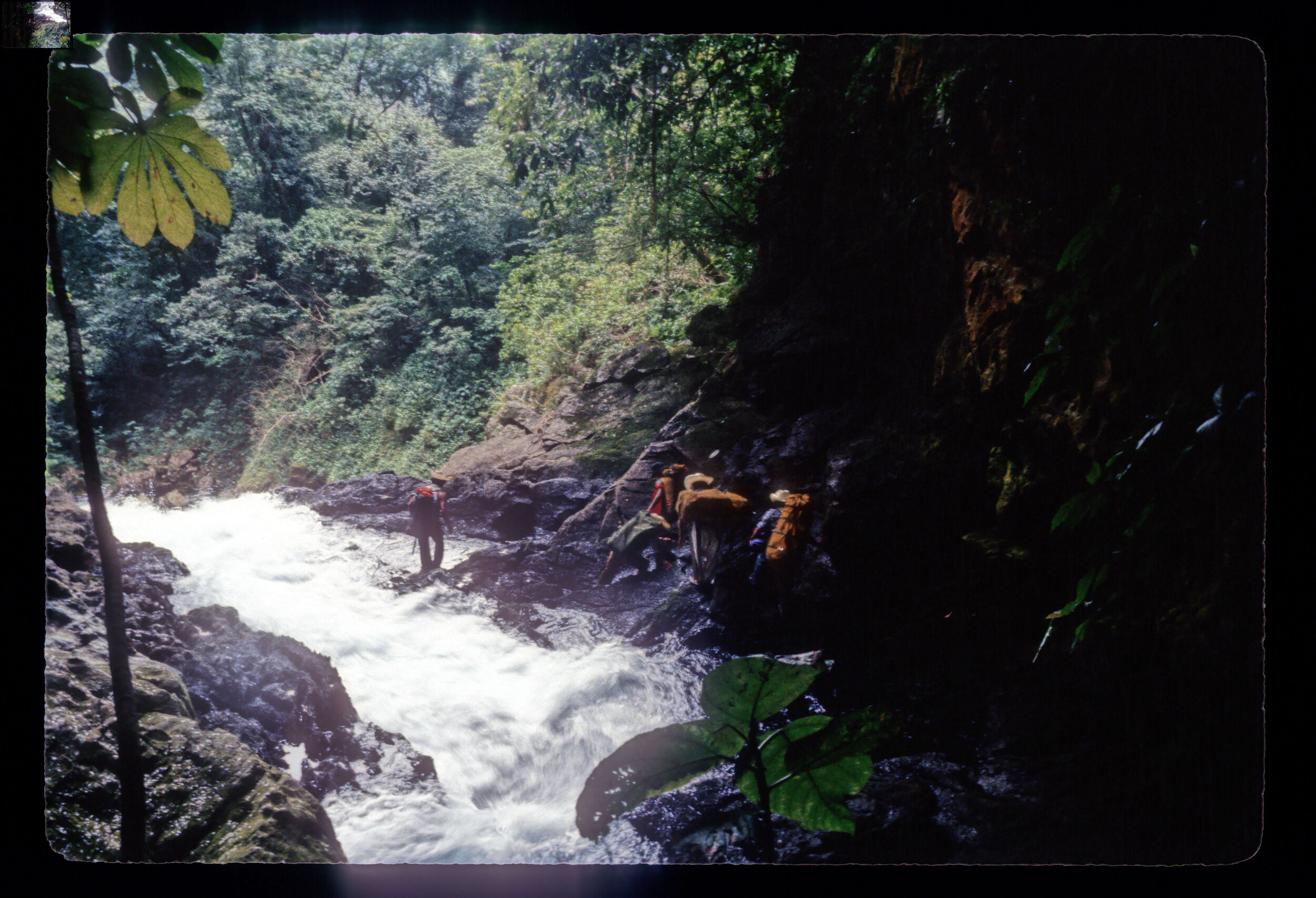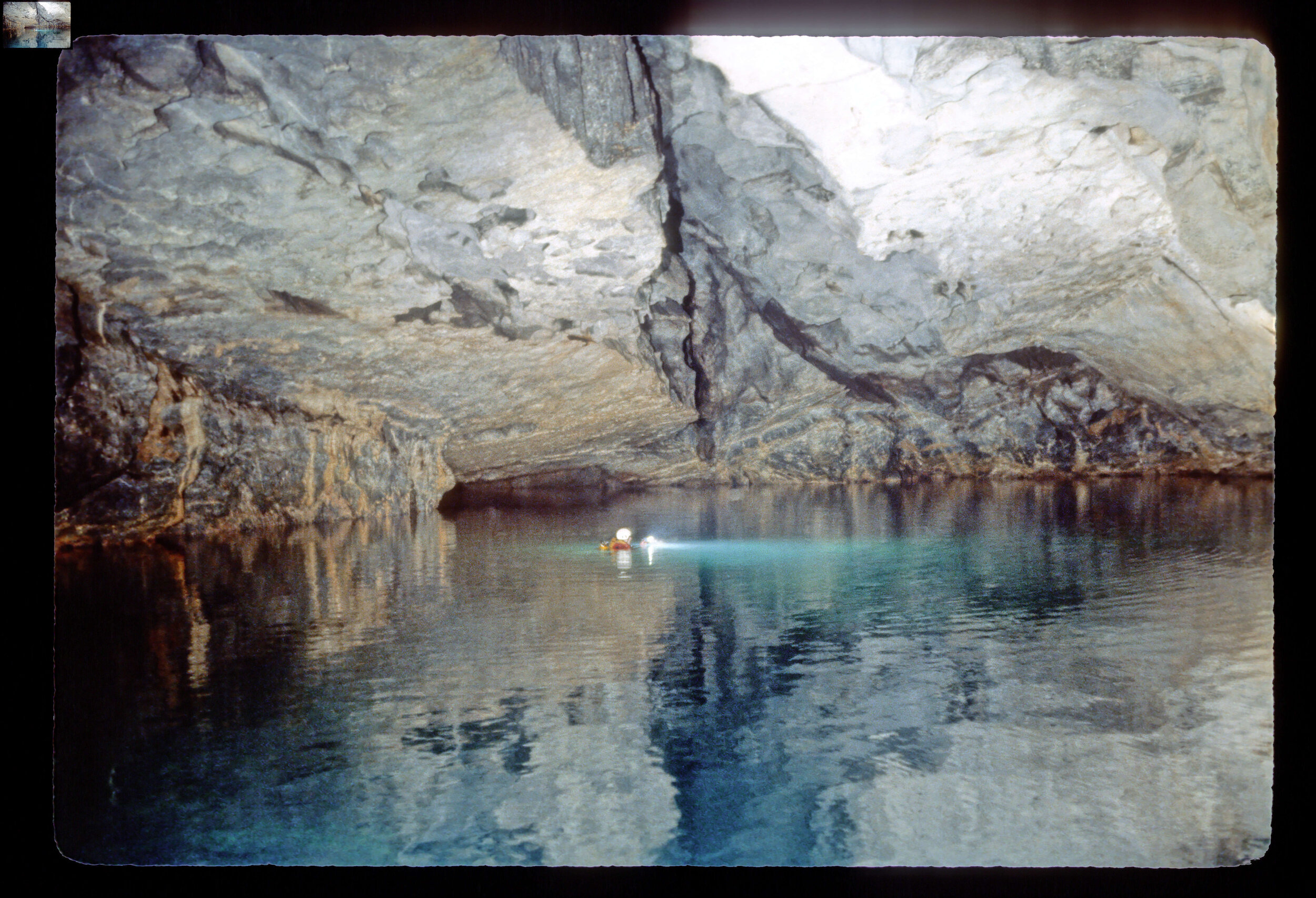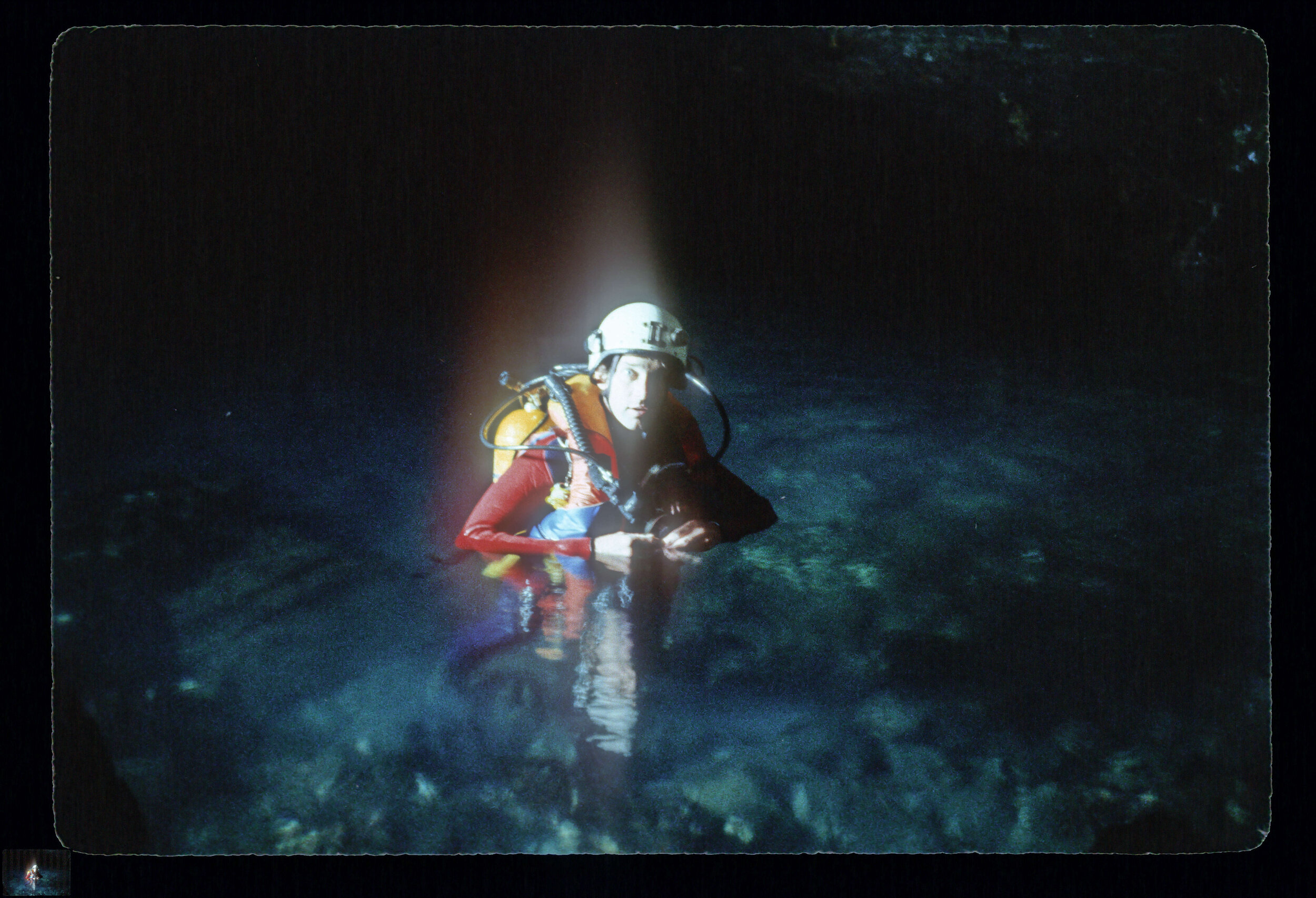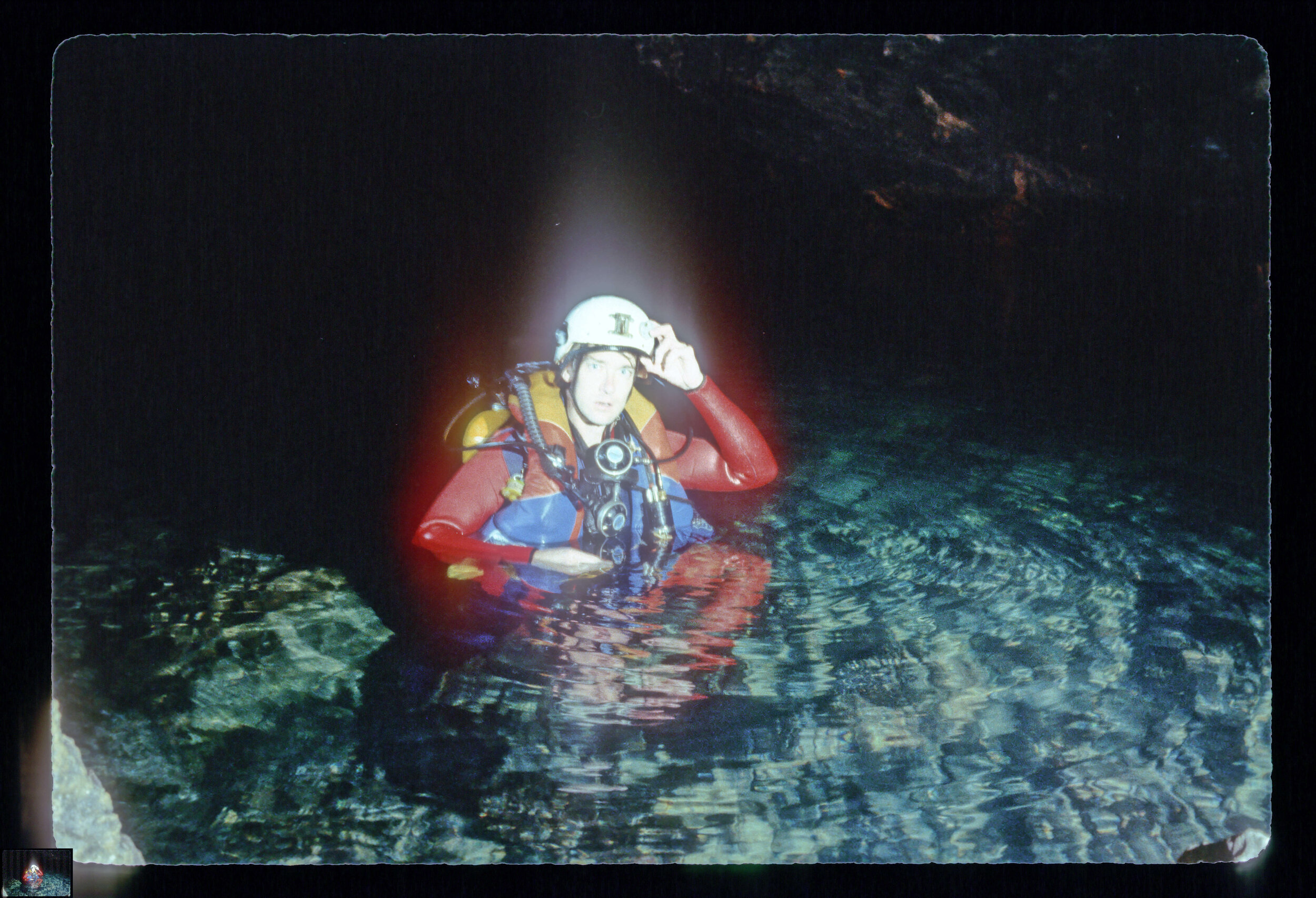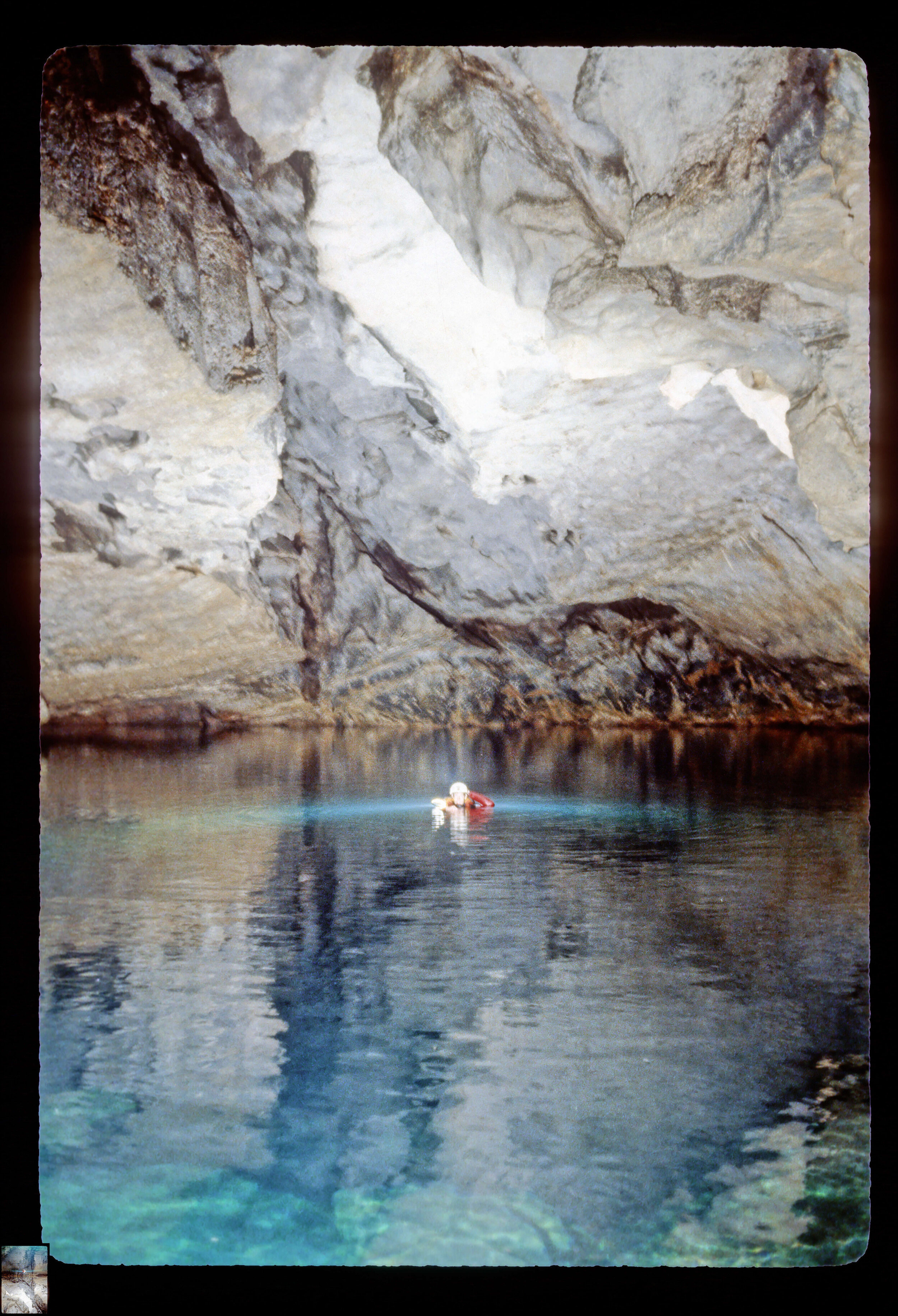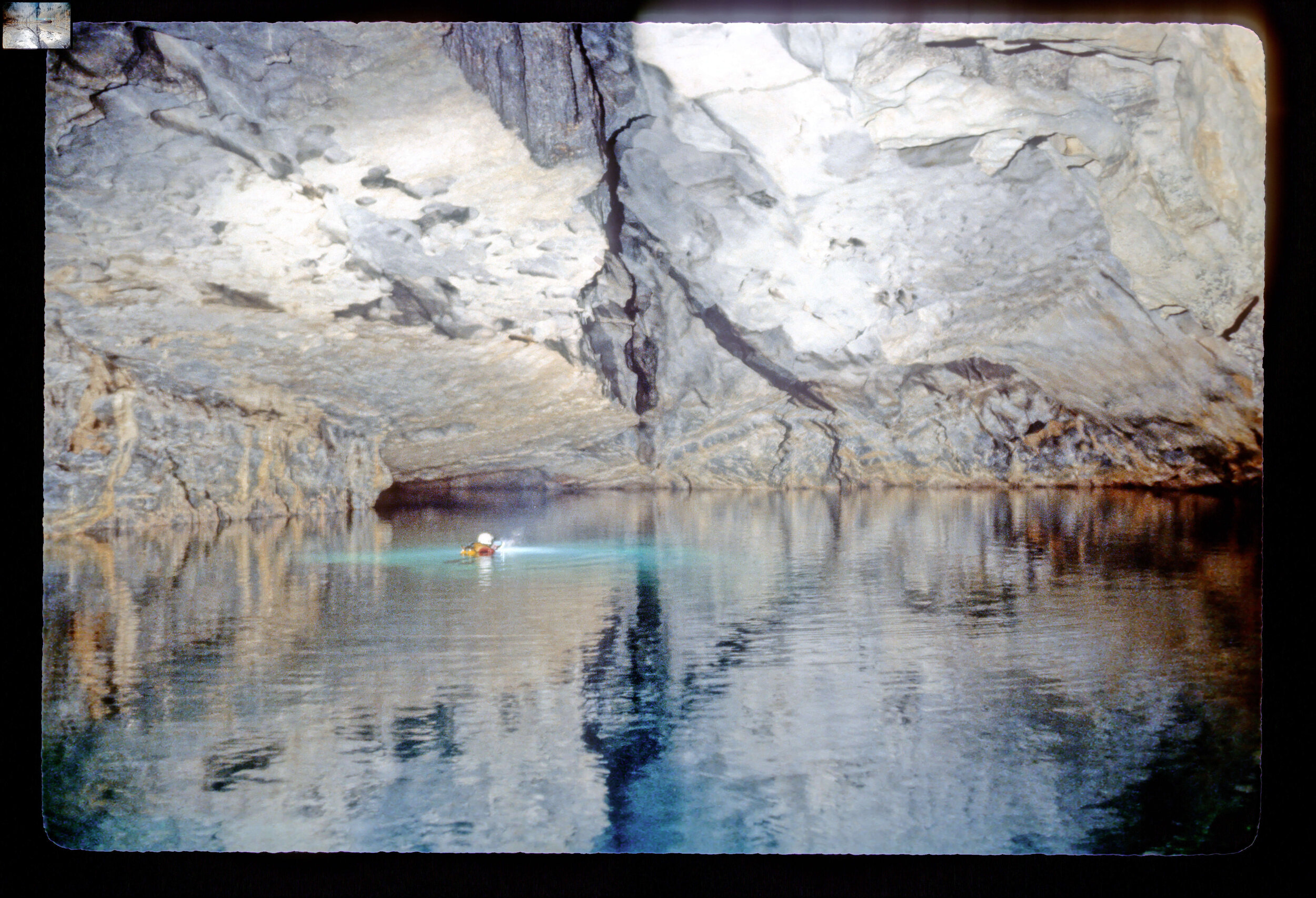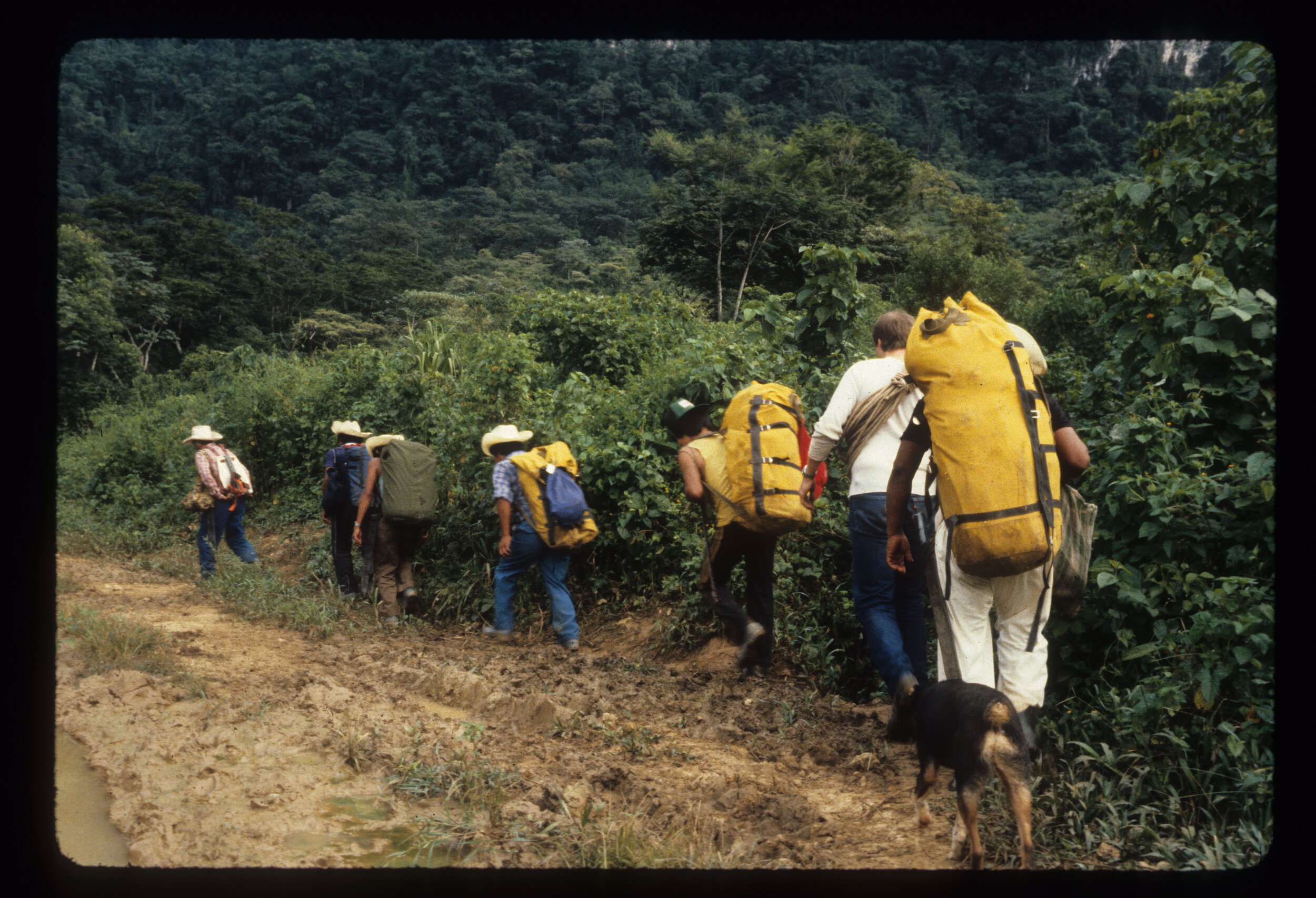Dr. Bill Stone has given our expedition with a great deal of support over the years, lending us loads of equipment, introducing us to important people and providing valuable information about the remote places we explore. Thanks to him we were recently able to obtain some very cool images of the first ever diving expedition to the Uluapan from 1986.
Here is how he described the dive:
We spent the entire next day chopping a steep trail up the left side of the raging arroyo leading up to the entrance. The water coming out the entrance was frightening. I still remember taking a photo of Noel standing beside it. The water flying out over the travertine falls was deeper than Noel was tall and it arc'd out a good 20 meters before disappearing in a cloud of impact-induced spray and fog. We seriously considered aborting right then. But further investigation showed that the breakdown on the floor of the entrance chamber right there at the entrance was diffusing the flow - enough so that despite that ferocious waterfall just meters away, the deep, dark, long lagoon leading back into the mountain was tranquil, still.
The following day, using 1984 Pena Colorada diving kit (S-glass composite tanks, Y-valves, and specially modified Sherwood regulators that handled 5,500 psi) borrowed from Zambrano, Sloan and I suited up while the four sherpas watched on. It has been 33 years since that day but I still remember the exchange I had with Noel before entering the water. He gestured with his arm towards the back of the blue-black lagoon and began nodding. Then he looked at me and said, "have you ever seen the movie Caltiki - the Immortal Monster ?" I looked at him, and off towards the back of the lagoon, then back at him and said, "unfortunately, yes. why the hell did you have to bring that up ?"
It was a spooky place. We inflated our BCs and swam as far as we could into the entrance chamber lagoon, to where it take a westward jog. We tied off there and submerged. Each of us had two back mounted 9-liter tanks at 5,500 psi (air), so we were somewhat limited in what we could do. We did, however, have a log of line with us. We stayed on the right wall at roof level, trying to keep as high as possible. We had pretty good primary cave lights, but probably no where near as tight and powerful as what we have today. Nonetheless, we spotted what appeared to be sculpted sand on the bottom, perhaps 30 meters below. The left wall was out of sight in the blackness. I remember the right wall being stratified and curving upwards. We tied off at 280 meters penetration when we hit thirds on our gas supply. We had no backup whatsoever so we were playing it conservative.
